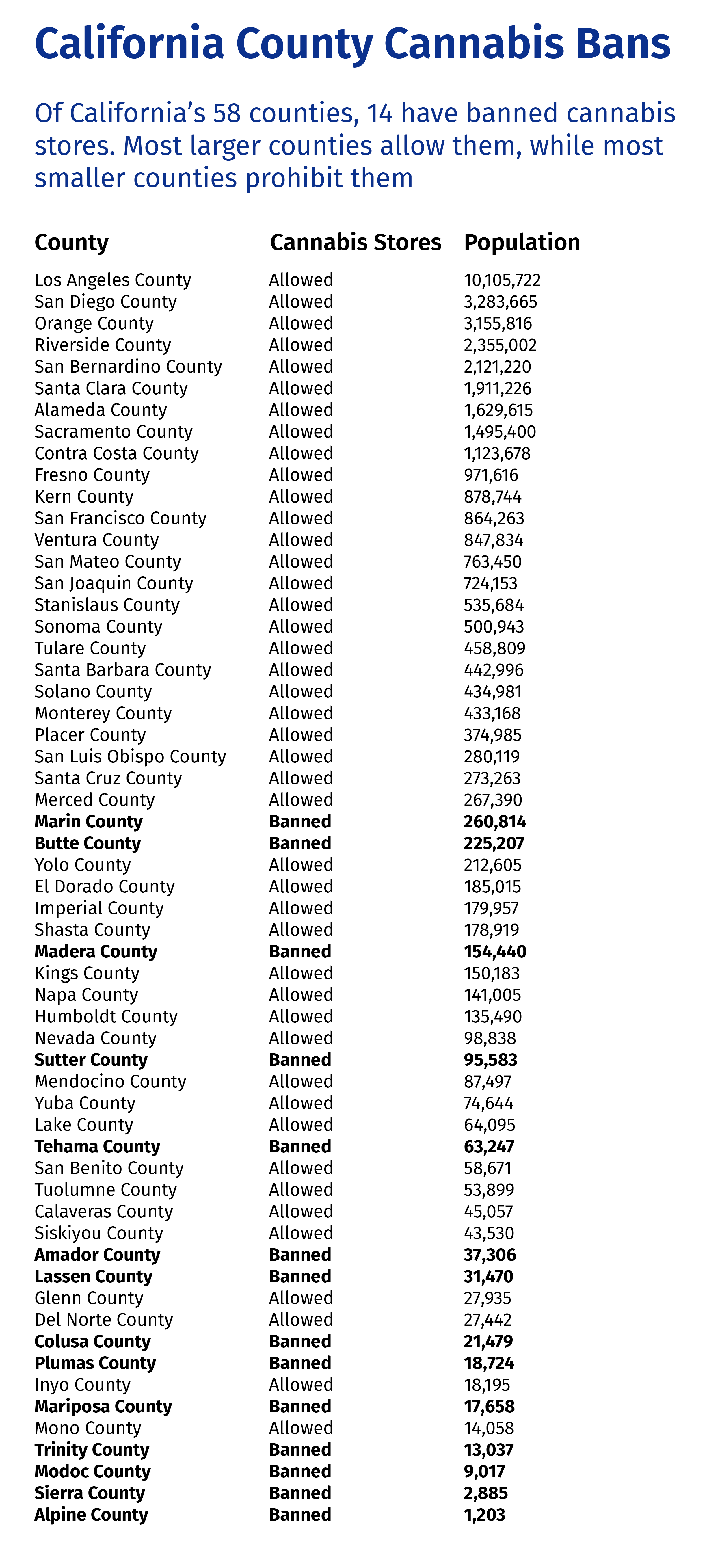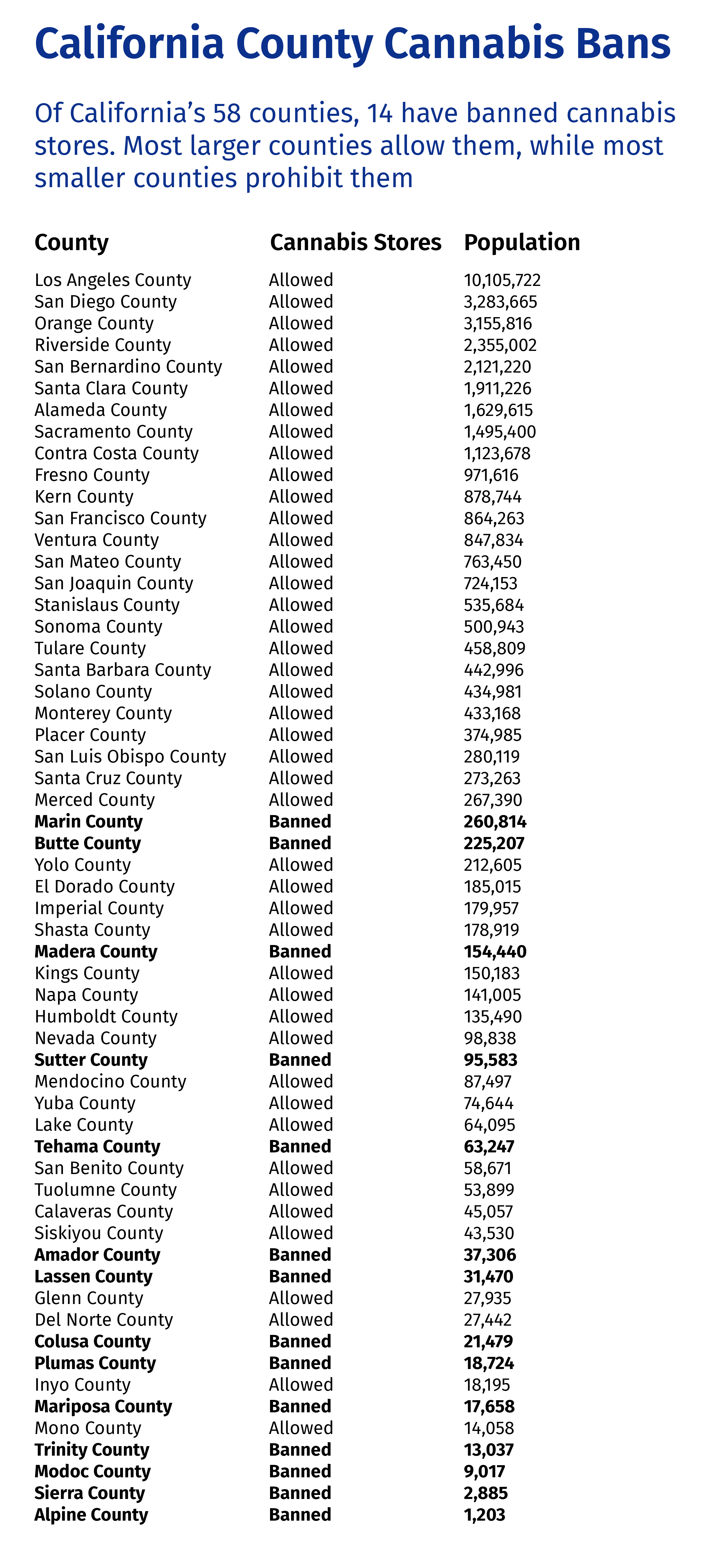Cannabis Deserts in Rural California
The local ban has become the bane of legal cannabis states. With every new legalization vote, the pattern repeats: Local town or county officials scramble to “keep marijuana out of our backyard” by banning licensed and regulated cannabis stores.
Rural counties ban cannabis to ‘keep it out of our community.’ But it’s already there.
We all know that cannabis isn’t “coming in” anywhere. It’s already circulating in every county and town in America. You can have it as an illegal product, untested and sold to minors. Or you can have it tested, regulated, and sold only to adults in licensed stores.
In California the problem is especially acute. In the state that practically invented cannabis culture, home of the famed Emerald Triangle, 39 of 58 counties prohibit the retail sale of cannabis. While researching Leafly’s new report, Debunking Dispensary Myths, we discovered that 400 incorporated cities and towns have banned stores as well.
At some of these council discussions, it’s not uncommon to hear a version of this sentiment: Let the big cities handle it. Keep the dispensaries in Los Angeles, Oakland, and Sacramento. That’s anecdotal evidence, but it adds up to this eye-opening chart that lists California counties according to population.
 ‘Allowed’ counties contain at least one town with a legal cannabis store. ‘Banned’ counties contain no cannabis stores whatsoever. (Leafly)
‘Allowed’ counties contain at least one town with a legal cannabis store. ‘Banned’ counties contain no cannabis stores whatsoever. (Leafly)
The pattern is clear. Heavily populated counties, near the top, tend to allow cannabis stores. Sparsely populated rural counties almost all move to ban the stores.
Why the Urban–Rural Divide?
The reason comes down to innovation. Retail cannabis requires creating new health and safety codes and enforcing them. Cannabis retail is clustered in some of the most dynamic, innovative communities rich in technology and financial capital.
It comes down to innovation and money. Cannabis stores are clustered in some of the most dynamic cities rich in technology and financial capital.
By contrast, ban cities and counties say they want to “take it slow,” and acknowledge that they lack the regulatory acumen to innovate locally. They tend in general to be more rural, as well as conservative and resistant to change.
But there are a lot of signs that things are changing. Voters enacted dozens of local sales and excise taxes on cannabis at the ballot box in 2018—a prelude to licensing. All across the state, cities and counties that held out against licensing medical stores for 23 years are now licensing medical stores—and recreational ones, too.
Change Is Coming, Slowly
The bedroom city of Alameda and its East Bay neighborhood Emeryville are both licensing retail outlets for the first time.
Sleepy central coast beach towns like Pt. Hueneme and Goleta—hardly bastions of innovation—are incorporating cannabis retail.
In Southern California, the city of San Diego is a dramatic turnaround story, going from complete medical prohibition and sweeping raids to licensing the entire cannabis supply chain, from farm to retailers. Industry applicants are a regular feature in San Diego planning department hearings for conditional use permits.
A new state bill from Assemblymember Phil Ting would triple the number of local stores by state mandate, but they’re already begun to compete for the state’s multibillion-dollar business.
Just like alcohol prohibition’s end, more and more “dry” counties promise to become “wet.” How long that takes is up to voters.
















